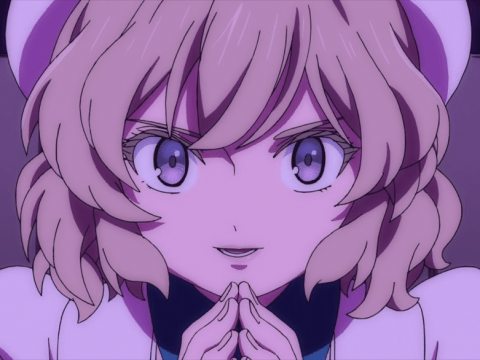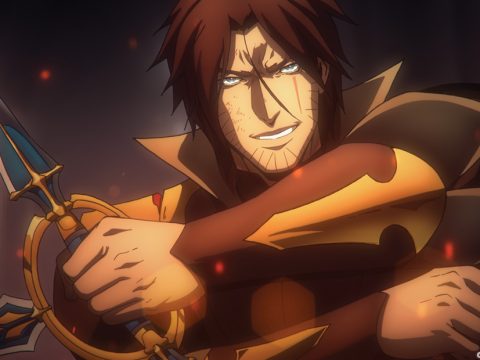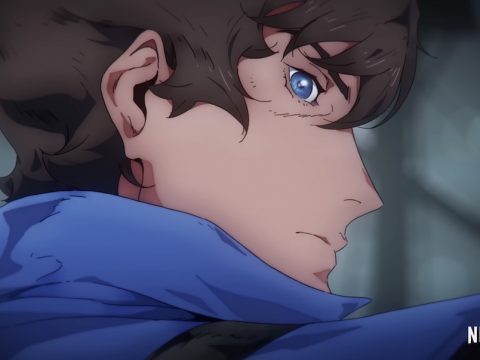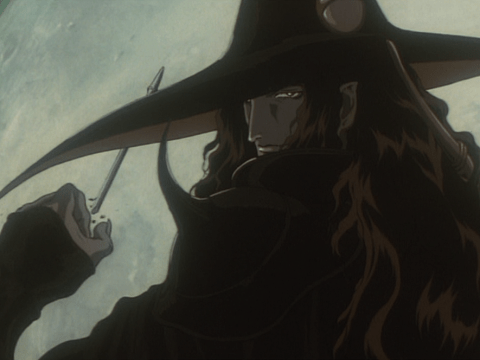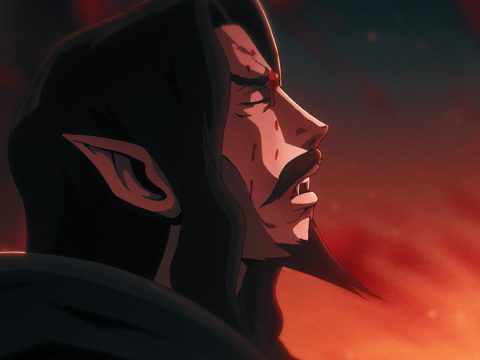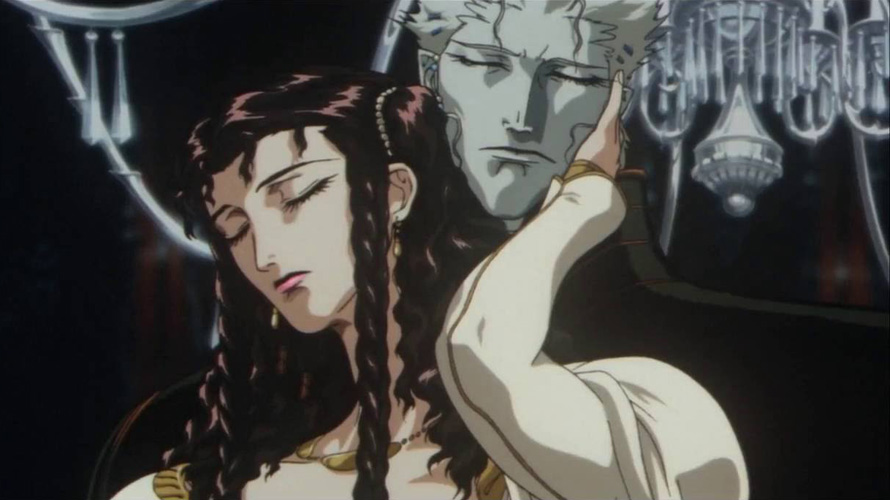
From the young adult section of your local bookstore to every other show on The CW and the recent release of the latest movie installment of Clarissa’s favorite live-action film franchise the Twilight “Saga” (based on her time spent talking about it), vampires are once again in the public spotlight in a huge way. Sure, geeks and nerds may currently be obsessed with zombies–the Max Brooks variety more than the Dungeons & Dragons style ones—but fiction’s longest enduring anthropomorphized rape metaphors are the current “hot topic” across all media. But for every memorable vampire anime like Hellsing Ultimate or the third volume of Cyber City Oedo 808 (three words: vampires in SPACE), you’ve got tons of forgettable stuff like Trinity Blood, Blood+, Black Blood Brothers…dare I say Ultraviolet: Code 044? To say nothing of truly “amazing” fare like Vampire Wars. What gives, Japan? Is this really so hard for you to get right?
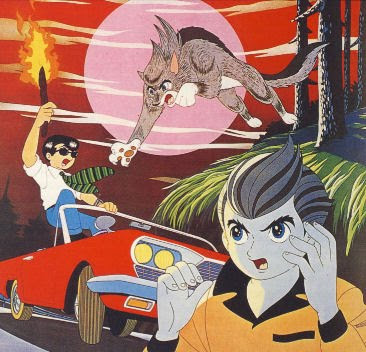 Actually, it might be. Japan is certainly aware of the idea of vampires and Dracula, and has been for several decades. But they don’t really have a tradition for them compared to the West, and that may be why when vampires are utilized in anime or manga, they are generally handled on a largely superficial basis: as monsters with superpowers such that despite the name “vampire” they can be practically ANY kind of monster and have ANY kind of superpower. Even “God of Manga” Osamu Tezuka, best known for creating Astro Boy, created a title called VAMPIRE in the late 1960s. But the creatures in this story were not undying nocturnal ones who drank human blood: they were people who turned into animals when they felt a certain way! In the decades that followed, the Japanese more or less picked up on the notion that a vampire isn’t a vampire unless they drink the blood of people, which is more than can be said for that OTHER “vampire” thing! Still, if you see anime with vampires in it, you’d probably do well to steer clear. A pity Cartoon Network didn’t follow that advice.
Actually, it might be. Japan is certainly aware of the idea of vampires and Dracula, and has been for several decades. But they don’t really have a tradition for them compared to the West, and that may be why when vampires are utilized in anime or manga, they are generally handled on a largely superficial basis: as monsters with superpowers such that despite the name “vampire” they can be practically ANY kind of monster and have ANY kind of superpower. Even “God of Manga” Osamu Tezuka, best known for creating Astro Boy, created a title called VAMPIRE in the late 1960s. But the creatures in this story were not undying nocturnal ones who drank human blood: they were people who turned into animals when they felt a certain way! In the decades that followed, the Japanese more or less picked up on the notion that a vampire isn’t a vampire unless they drink the blood of people, which is more than can be said for that OTHER “vampire” thing! Still, if you see anime with vampires in it, you’d probably do well to steer clear. A pity Cartoon Network didn’t follow that advice.
The closest Japan has come to the “traditional” depiction of the vampire as we know it in America still had cyborg horses, laser guns, and talking parasitic hands with human faces. I speak of course of Vampire Hunter D from 25 years ago and its now nearly decade-old sequel, Vampire Hunter D: Bloodlust. In the first movie, the primary vampire antagonist Count Magnus Lee looks and behaves somewhat like a cross between Bela Lugosi and Christopher Lee… only he’s also telekinetic and can fire beams from his eyes which may or may not blow up your head. I guess the regular vampire powers just weren’t enough. Bloodlust’s Meier Link is a handsome blue-skinned vampire (so THAT’s where Gankutsuou got the idea!) that can turn his cape into a razor sharp weapon or shield.
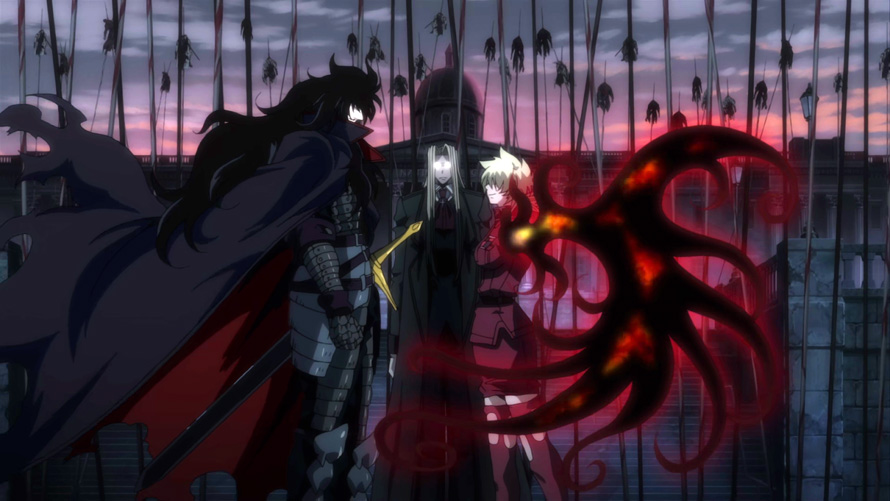
I don’t think that one was in Papa Smurf’s spell book. Despite the additional abilities, both Magnus and Meier are quite hard to kill, employ a variety of other beasts as underlings, are susceptible to light, feed on human blood, and can turn others into vampires just as you’d expect a “vampire” to do. Perhaps this is why I still think these two are among the few vampire anime that aren’t either dreadful or painfully average. But despite being mostly “standard” vampires, the associated thematic issues that are standard issue with the vampire concept in the West are still generally glossed over or ignored entirely.
That’s A-OK in my book, because, personally speaking, I never much cared for the “vampirism as escapism and empowerment” themes that run so prevalent in all those “frilly shirt” vampire tales. I want vampires to exist as scary monsters deserving of being perforated by sharp objects. Come to think of it, rare is the vampire anime in which you will see a vampire killed via a wooden stake through the heart. Even in the Castlevania games, you almost never stake Dracula to kill him. And he almost always turns into a giant freaky abomination as his REAL form, because plain ol’ vampires just aren’t enough I guess.
 Still, the “frilly shirt” version of the rape metaphor is the one most preferred by the ladies. Vampire fiction for girls has always tended to have the least threatening vampires around, and shojo anime is no exception. The Vampire Princess Miyu OAVs features a vampire unaffected by sunlight, crosses, or any of the traditional vampire weaknesses. There’s basically no downside whatsoever to being a vampire or being bitten by one, as the REAL bad guys are the evil demons that Miyu must hunt down and banish. The TV series turns this formula into a monster-of-the-week magical girl show; “Sailor Moon, except people die” as I call it.
Still, the “frilly shirt” version of the rape metaphor is the one most preferred by the ladies. Vampire fiction for girls has always tended to have the least threatening vampires around, and shojo anime is no exception. The Vampire Princess Miyu OAVs features a vampire unaffected by sunlight, crosses, or any of the traditional vampire weaknesses. There’s basically no downside whatsoever to being a vampire or being bitten by one, as the REAL bad guys are the evil demons that Miyu must hunt down and banish. The TV series turns this formula into a monster-of-the-week magical girl show; “Sailor Moon, except people die” as I call it.
A more current shojo vampire story, Vampire Knight (the manga for which has been outselling Naruto since the last erm, new moon), also suggests a more symbiotic and understanding relationship between vampires and people. In these titles, vampires aren’t inherently evil: there are good vampires and bad ones. You know what that suggests? That’s right ladies; it suggests the door is wide open for torrid HUMAN / VAMPIRE LOVE. Which inevitably becomes vampire / vampire love, and if you’re a goth girl then that’s the best kind of love there is. I am neither a goth nor a girl, so perhaps that’s why I just can’t get into these types of vampire tales. To go back to Miyu, sure she drinks blood, but everyone whose blood she drinks ends up in a perpetual state of bliss, false though it may be. Hmm, maybe vampires are more of a moé metaphor!
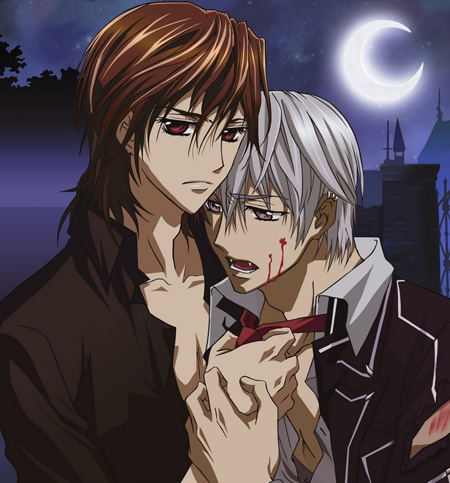 Indeed, there is perhaps one monster far more deadly than that of the vampire in anime: the Dread Spectre of Moé. Japan’s long-standing obsession with girls that have really screwed up teeth gave rise to depicting some “cute” characters in anime as having fangs, so making them vampires was the next logical step. And since vampires retain eternal youth, that enables moé fans to state “but she only LOOKS like she’s in elementary/middle school; in fact, she’s thousands of years old!” to their arresting officer. Rosario+Vampire, Moon Phase, and Karin aka Chibi Vampire are but a few such titles like this, whereby the vampire exists mostly as a quirky relationship gimmick a la the shojo stories. Of course, THESE are never “typical” vampires either. Not only is Karin unaffected by sunlight and unable to turn into a bat or anything, she doesn’t even need to drink blood for crying out loud!
Indeed, there is perhaps one monster far more deadly than that of the vampire in anime: the Dread Spectre of Moé. Japan’s long-standing obsession with girls that have really screwed up teeth gave rise to depicting some “cute” characters in anime as having fangs, so making them vampires was the next logical step. And since vampires retain eternal youth, that enables moé fans to state “but she only LOOKS like she’s in elementary/middle school; in fact, she’s thousands of years old!” to their arresting officer. Rosario+Vampire, Moon Phase, and Karin aka Chibi Vampire are but a few such titles like this, whereby the vampire exists mostly as a quirky relationship gimmick a la the shojo stories. Of course, THESE are never “typical” vampires either. Not only is Karin unaffected by sunlight and unable to turn into a bat or anything, she doesn’t even need to drink blood for crying out loud!
It’s not like I don’t support the idea of having fresh takes on classic monsters. It’s not as though vampires are real (sorry, LARPers) and there’s a rulebook that states “THIS is how vampires MUST be, so it is declared!” But when virtually every single take on the vampire in Japan is so different from each other as well as what Westerners generally think a vampire is, I get to thinking that maybe part of why so much vampire entertainment—not just anime—is the pits is because of this perceived need to make “new and unique” versions of them every single time, often by throwing out nearly every defining vampire characteristic while still claiming they’re vampires. Interestingly, the character archetype that’s most consistently portrayed across most of these anime titles is that of the ones who hunt the vampires. These characters may themselves be vampires or partially vampires, but for almost every vampire anime title there is, the “hunter” archetype is where the interest and focus lies more than the “vampire” itself.
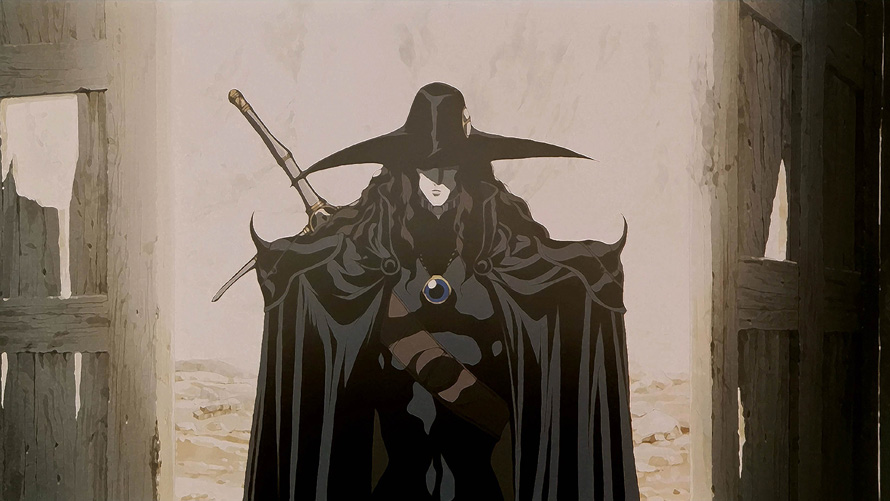
What we need now is for Yoshiaki Kawajiri and Madhouse Studios to make a Vampire Hunter D Part Three movie and remind everyone of what vampires are REALLY about: dudes on robot horses with talking left hands catching arrows fired by a Rob Liefeld 5-man team on their quest to stop the shuttle launch and cleave some werewolf with an extra mouth growing out of its stomach. Until that day comes, if you see vampires as part of the premise of a new anime series, you may want to hit the [Abel Night]road, Jack, and don’t come back.
Vampire Hunter D is © 1985 EPIC/SONY, Inc. / MOVIC, Inc. / CBS/SONY Group, Inc.



